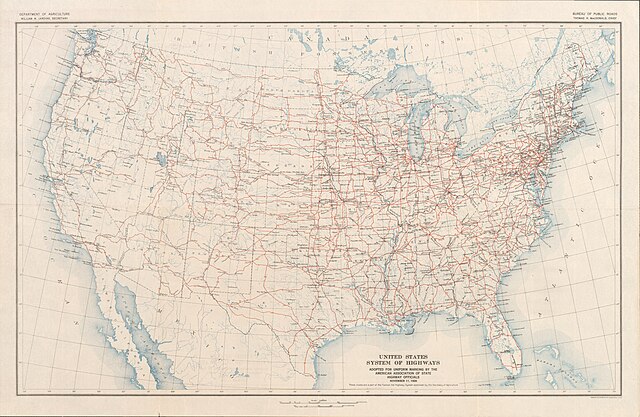U.S. Route 99 (US 99) was a main north–south United States Numbered Highway on the West Coast of the United States until 1964, running from Calexico, California, on the Mexican border to Blaine, Washington, on the Canadian border. It was assigned in 1926 and existed until it was replaced for the most part by Interstate 5. Known also as the "Golden State Highway" and "The Main Street of California", US 99 was important throughout much of the 1930s as a route for Dust Bowl immigrant farm workers to traverse the state. Large portions are now California State Route 99 (SR 99), Oregon's Routes 99, 99W, and 99E, and Washington's SR 99. The highway in Washington connected to British Columbia Highway 99, whose number was derived from that of US 99, at the Canada–US border.
Historic southern terminus of US 99 in Calexico, CA
U.S. Route 99 in Grants Pass, Oregon, 1939
US 99 Sign in Downtown Seattle, at the entrance to the old Alaskan Way Viaduct. The viaduct was torn down in 2019 after it was replaced by the State Route 99 tunnel.
United States Numbered Highway System
The United States Numbered Highway System is an integrated network of roads and highways numbered within a nationwide grid in the contiguous United States. As the designation and numbering of these highways were coordinated among the states, they are sometimes called Federal Highways, but the roadways were built and have always been maintained by state or local governments since their initial designation in 1926.
The "final" U.S. Highway plan as approved November 11, 1926
This sign, photographed in 1941 on US 99 between Seattle, Washington, and Portland, Oregon, illustrates one rationale for a federal highway system: national defense.





